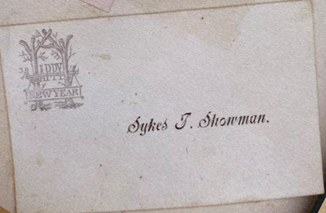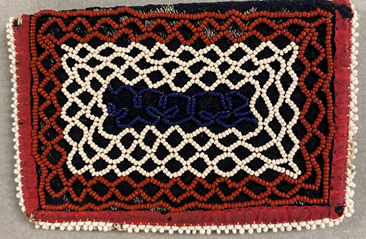Ah, the good old days! So many people who walk through the Watson-Curtze mansion imagine a life of servants, fine clothing, and beautiful furnishings. Others perhaps see a “gilded” cage of strict social rules and structure based on race, class, and gender. Even though I prefer to imagine the former, the latter cannot be denied.
One aspect of living in the mansion after its construction in 1892, was the strict social code of “calling” on people and the use of calling cards. We do not have this custom any longer, so I wanted to do a little research. I used a book we had lying around the office, “The Essential Handbook of Victorian Entertaining” adapted by Autumn Stephens, which provided almost too much information, but I will summarize it here.

The custom began in Asia, spread to Europe, and eventually landed on American shores, mainly in the established cities of the Northeast. Only the wealthy participated in “calling” on others, those who established themselves with manufacturing in Erie in particular. Wives stayed home at the time and society dictated that to maintain friendships with others in their class, days were set aside to visit and accept callers.
Calling cards were either machine printed or written in a person’s finest handwriting. They were initially black and white, but I have seen others in full color printing. Visits were kept short, usually 15 – 20 minutes and were paid for a variety of reasons: to offer regrets for an invitation, thanks for a previous social engagement, condolences (within a week of a death), to respond to an invitation (with 3 days of receiving the invitation) or to offer congratulations.

When going on a call or visit you presented your card to the servant who opened the door. You dressed like you were going to Church or to a reception (no sweatpants!!), and if the lady or gentleman of the house was busy, you left your card with a handwritten note expressing the reason for your call, and then departed.
When receiving visitors, the lady was to wear her nicest housedress with no flowers or expensive jewelry. In winter, guests were to be seated by the fire and if multiple people arrived at the same time, all were to be paid equal attention to. No controversial subjects were to be brought up so that no one felt uncomfortable.
The calling card and “calling” fell out of favor as the postcard and telephone became more predominant in maintaining social relationships. Today it is texts, emails, and social media, however; nothing replaces a good old-fashioned visit in my opinion. We may bring up politics and other uncomfortable subjects at times but that is our lack of politeness which we should curtail. In a way, the calling card still exists, it has been replaced by the business card. So, the calling card indeed is experiencing a long life, my wish for all of you.
